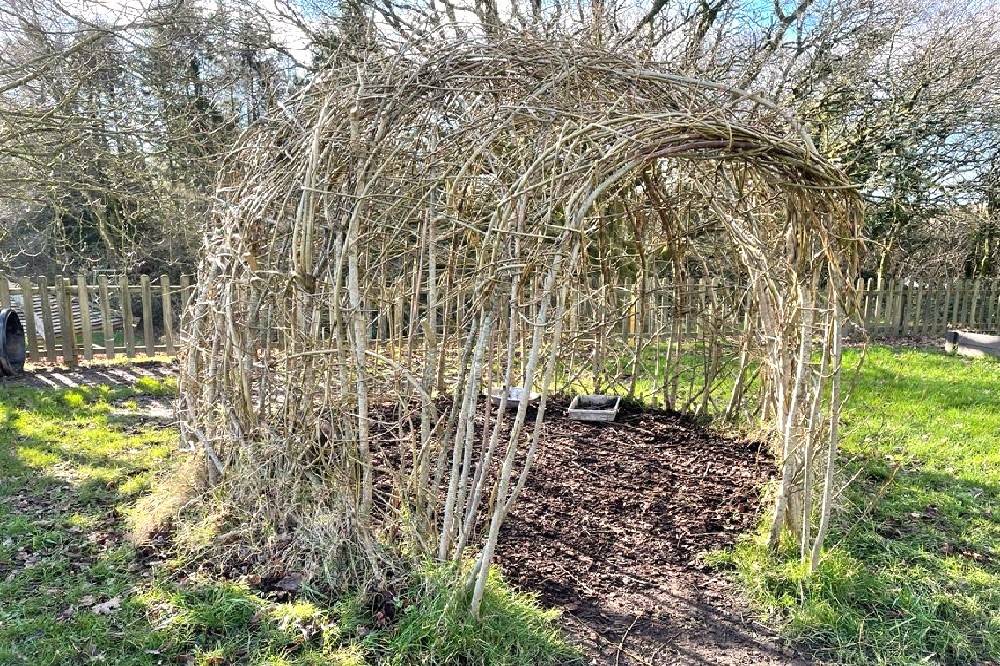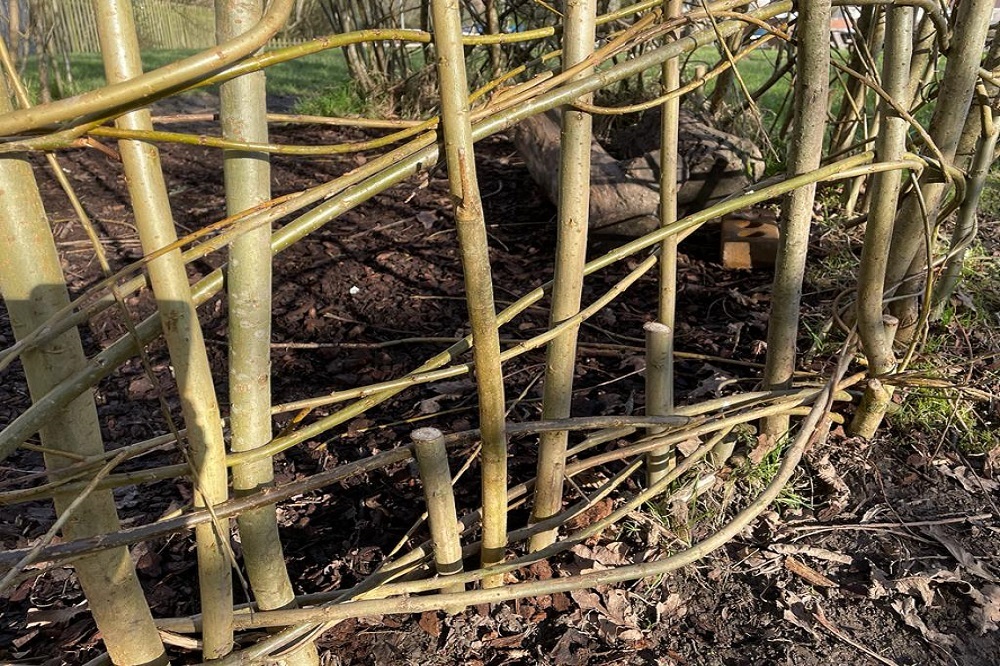Tawny Clark builds a willow dome for pint-sized adventurers

Tawny Clark
Sometimes the only way to learn is to do. There’s a satisfying spontaneity about getting stuck in and figuring things out as you go. Yes, total failure is always a possibility, but so what?
My initial design concepts rarely last, but I love how the organic imperfections and inconsistencies of wood requires a flexibility of approach. Afterall, where’s the fun in sticking rigidly to a plan?
Projects are perpetually tweaked and adapted; sometimes due to an unforeseen hitch or adjustment in perceived capability, but often from a sudden revelation, stumbling across a better, more efficient way of doing something – learning.
Trial and error is how the world works, or at least how it used to. As we strive for perfection there’s a real risk of giving up before we even begin.
Setting ourselves up to fail by demanding Instagram-worthy results every time. Constantly seeking approval from others. Who cares what anyone else thinks? Have a go. Enjoy yourself. Who knows, maybe you’ll even feel proud that you achieved something.
With this pep talk firmly in mind, my task was very much one of those, watch a few YouTube videos and pretend you know what you’re doing, type of projects.
‘Yes, of course I can build a willow dome, no problem!’
Focused optimism
In January 2019, at a local primary school, I did just that. Utilising offcuts of Common Osier (Salix viminalis) or basket willow, from an overgrown tunnel nearby, I set out with focused optimism and a vague plan.
As a single-handed pilot outing into the craft of willow weaving, opting for a three-metre diameter dome was perhaps rather ambitious. But I duly commenced driving the freshly cut withies as far into the heavy, winter-soaked clay as was physically possible. At least twenty centimetres is recommended – in an ideal world.
Once the uprights were in, I began weaving diagonals in and out like a collie on an agility course. For the structure to grow these needed pushing into the ground too – not easy at an angle, but I did my best.
Soaking before weaving makes willow a pliable pleasure to work with. Failing that, you can use the flexible, freshly cut stems directly during winter. Although – to save you the vexation of discovering this for yourselves – they tend to snap a lot and it can become rather annoying!
A dome this size would take time to reach its full potential. With the diagonal stems hopefully taking root, there’d be new growth later in the year, but for now things were looking somewhat sparse.
They only reached about a metre from the ground, so I weaved further withies in horizontally, like a giant basket above the living diagonals, to complete the circular wall. They would die back, but I hoped new growth would disguise that fact.
Salix Henge
Final job – enclose the roof. Until this point, I’d been in denial about the willow uprights being too short to meet at the top. After deliberation I decided a temporary solution was to weave a lid, to perch on top of the dome while the structure rooted.
The result resembled a giant spiderweb. I weaved it into the newly planted dome to hold it firmly in place – although it sagged a bit due to the weight. It looked a mess, or ‘rustic’, as is the virtue of wood.
I’d incorporated child level bird-watching windows and a wonky igloo style porch. It would never feature on Grand Designs but so what? The purpose was to create an outdoor hub for adventure and imagination. I had idyllic visions of classes cuddled up inside listening to, We’re going on a bear hunt and The Gruffalo.
It was about eighteen months before I was able to inspect my handiwork again. Oh Help, Oh no! It’s incredible how destructive three to six-year-olds can be. Evidently, they didn’t approve of the single-entrance design.
The horizontal basket weavings where gone. Inevitably shrinking and loosening as they’d died back; becoming brittle and easily snapped. Great fun as fighting sticks, but for the dome – about as futile as the second little pig’s house.
Several living vertical rods were missing. Either their roots hadn’t taken, or the children were overly determined to create an alternative entrance.
The spiderweb roof had vanished too, and the igloo doorframe. A round ruin remained. Battered and broken. Salix Henge. Mid-pandemic there were more pressing matters and no time for patch ups.
It was make or break for this sorry circle of life, a structure at risk of total collapse. Left to the mercy of the weather and invading infants.

January 2022. Rescue Mission.
Armed with extending loppers and a glamorous assistant (who immediately spotted a ladybird), we began by adding new verticals and diagonals to fill the gaping breaches.
We drove short willow stakes into all the gaps too. The theory being that new shoots would thicken up the base over time and fortify the weak defences. An additional task this time was to weave through the bounteous supply of new growth which had taken aim for the sun over the last three years.
The surviving stems had thankfully taken well. They’d grown long and supple; ready to weave into the structure to further boost its strength and resilience.
Finally, the task I’d eagerly anticipated for three relentless years. The roof. Long billowy tendrils now spread high into the cold blue sky. Balancing precariously on a log, on tiptoes, at full stretch, I managed to get a fingertip to the base of a long stem.
Tentatively edging my fingers along it, I pulled carefully downwards. Then, holding its tip, I reached for another on the opposite side. Crossing these first two lengths at the centre of the dome and weaving them in felt oddly symbolic, ritualistic almost.
I smiled, but with no time to dwell on ceremony, others were quickly bent over and weaved through, turning the sparse willow comb-over into a magnificent dense thatch. No longer a disjointed lid but a living, breathing roof. A holistic structure which, with care, could now thrive alongside several cohorts of schoolchildren.
It’s certainly no picture-perfect social media sensation, but who cares. I’m more interested in watching how the dome magically transforms from its winter skeleton into a vibrant, living hideout for pint-sized adventurers and intrepid explorers.
Support our Nation today
For the price of a cup of coffee a month you can help us create an independent, not-for-profit, national news service for the people of Wales, by the people of Wales.





We had an artist build a giant willow spider for the first “London Play” festival with 8 tunnel legs leading to the central four metre wide story telling dome as the body of the beast. It lasted a few years but these are temporary structures that grow into jungle if not treated as topiary to be regularly tended.